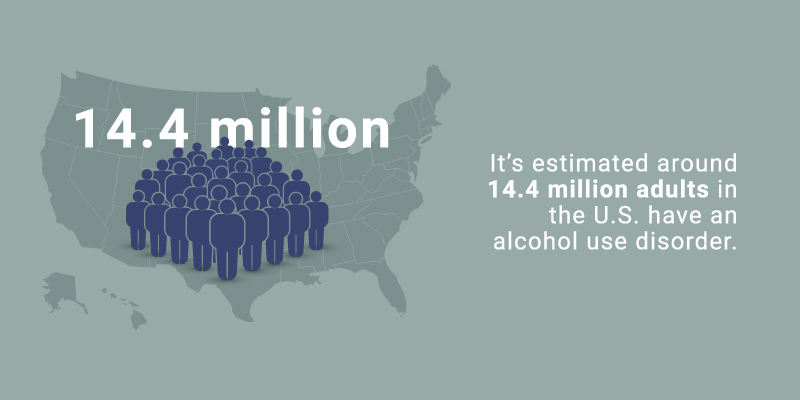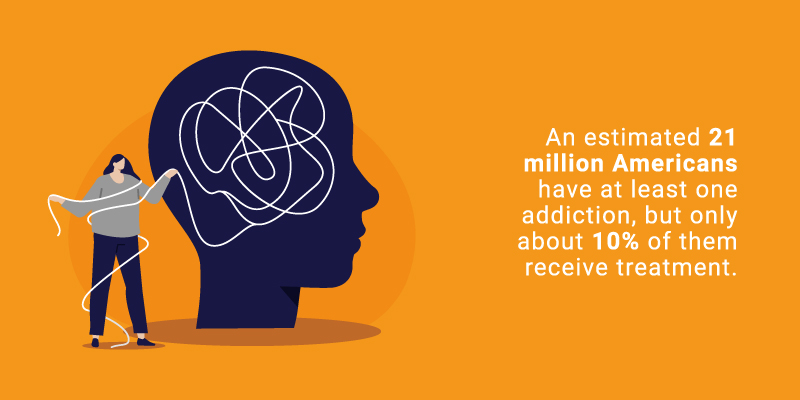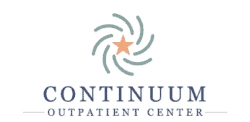Signs of Addiction: How to Know If You or a Loved One Need Help
Written by our Ripple Ranch Recovery Center staff & reviewed by Dr. Jeffrey L. Butts and Crissy Clark, LCSW-S, EMDR – Executive Director
What is Addiction?
When addiction goes unnoticed or ignored, the results can be devastating. Not only can it lead to mental and physical health problems, but it can also strain relationships, careers, and overall quality of life. Recognizing the signs of addiction early can make a significant difference.
Addiction is a complex condition. It’s a chronic disease that can make individuals use substances or act in ways that become harmful to themselves or others. Over time, these behaviors can become hard to control and lead to a wide range of problems.
It might start off as voluntary or recreational, but over time, changes in the brain can challenge a person’s self-control and interfere with their ability to resist the urge.

Learn More About Ripple Ranch Recovery Center
The Nature of Addiction
Differentiating Addiction Types
A Closer Look at Substance Use Disorder
Risk Factors and Predispositions for the Signs of Addiction
Genetics
Genetics significantly influence the development of addiction. This means that if addiction has appeared in an individual’s family history, they might have a higher risk of experiencing signs of addiction.
These genetic influences can affect how the body processes drugs and how the brain responds to the rewarding stimuli drugs and other addictive behaviors produce.
Environmental Factors
Mental Health and Co-Occurring Disorders
There’s a strong link between mental health conditions and addiction. These co-occurring disorders are very common in individuals struggling with addiction.
For instance, if someone is dealing with depression or anxiety, they might find themselves turning to substances or behaviors to cope. This can lead to the development or escalation of addictive patterns.

Recognizing the Common Signs of Addiction
- Occasional use and a growing interest in a substance or activity.
- Ignoring responsibilities at home, work, or school.
- Missing appointments or commitments because of substance use.
- Feeling the need to use the substance regularly, be it daily or multiple times a day.
"In early stages of addiction, families should be alert to subtle behavioral changes, such as increased secrecy, social withdrawal, and neglect of responsibilities. Observable shifts in mood, persistent financial issues, and a decline in personal hygiene are also indicative. Sudden changes in social circles and prioritizing substance use over once-enjoyable activities can signal emerging addiction. Families should seek professional guidance if they notice these signs to facilitate early intervention and support for the individual struggling with addiction."
Dr. Butts Tweet
Physical Symptoms
- Rapid weight loss or gain without any apparent reason
- Bloodshot eyes or dilated pupils
- Unexplained bruises or injuries
- Shaking, tremors, or impaired coordination
Psychological and Behavioral Indicators
- Drastic mood swings, from feeling euphoric to deep sadness or depression
- Difficulty concentrating or remembering things
- Increased feelings of anxiety or paranoia without a clear cause
- Lowered motivation and drive in activities that were once enjoyed

Signs of Addiction for Specific Substance Use Disorders
"Signs of addiction vary depending on the substance or behavior involved. For substances like alcohol or drugs, physical symptoms such as tremors or dilated pupils may be evident. Behavioral addictions, like gambling or gaming, may manifest through preoccupation, increased tolerance, and withdrawal symptoms. Understanding these substance-specific or behavior-specific nuances is crucial for accurate identification and tailored intervention strategies. If concerned about potential addiction, seeking professional evaluation can provide specific insights and guidance."
Dr. Butts Tweet
Alcohol and Drug Indicators
- Concealing or downplaying consumption
- Frequently drinking or using drugs alone
- Losing interest in hobbies or activities that were once enjoyed
- Slurred speech or impaired coordination
- Memory blackouts or forgetfulness
- Frequent hangovers or drug comedowns
- Yellowing of the eyes or skin, primarily from alcohol
- Persistent cough or nosebleeds, commonly seen in smokers or those who snort drugs
- Unexplained weight loss or gain
Alcohol Addiction: Causes, Signs, and Symptoms
Behavioral Addictions Indicators
- Spending more time or money on gambling than intended
- Feeling restless or irritable when trying to stop gambling
- Trying to chase losses by gambling more
Eating Disorders: Indicators to Note
- Extreme concern with body weight or shape
- Restricting food intake or binge eating, often in secret
- Feeling out of control during binge episodes
Distinguishing Occasional Indulgence from Addiction
The Role of Tolerance
Withdrawal Symptoms
A Closer Look at Tolerance and Withdrawal
The Cycle of Relapse and Recovery
Relapses are common and can be a natural part of the journey. They may occur for various reasons – stress, exposure to risk factors, or the residual effects of withdrawal.
However, a relapse doesn’t signify failure. It’s an opportunity to reassess and adjust the approach to recovery, emphasizing that continual support and adaptation are integral to the process.
"In the early stages of addiction, individuals may display subtle changes such as increased tolerance, secretive behavior, and social withdrawal. As the addiction progresses, observable signs intensify, including a loss of control over substance use, neglect of personal and professional responsibilities, and strained relationships. Advanced stages often involve severe physical and psychological consequences, such as deteriorating health, legal issues, and persistent cravings. Recognizing these stages is vital for timely intervention and the implementation of comprehensive treatment plans."
Dr. Butts Tweet
The Potential Consequences of Addiction
Health Impacts
- Organ damage, potentially leading to diseases like liver cirrhosis or lung disorders.
- A weakened immune system, which makes an individual more susceptible to infections and illnesses.
- Chronic health issues, which can decrease overall life expectancy.4
Social Repercussions
Economic and Legal Consequences
Intervening and Offering Support For Those Struggling With Addiction
How to Start the Conversation
Dos and Don'ts of Addiction Talk
- Jump to Conclusions: Even if the signs of addiction seem clear, avoid making assumptions. Instead, focus on observations and express concern.
- Interrupt or Dismiss: Let them speak. If they share something, even if it’s challenging to hear, listen without interrupting.
- Use Ultimatums: Statements like “If you don’t stop, I’ll leave” can push them further into defense mode. Instead, express any concerns and the reasons behind them.
- Get Discouraged: Remember, it may take multiple conversations before they acknowledge the signs of addiction and consider seeking help.

The Path to Addiction Recovery
The Stages of Recovery
- Precontemplation: Denial is prominent. The signs of addiction are often overlooked, and there’s a significant reluctance to accept the existence of a problem.
- Contemplation: A realization phase where an individual acknowledges the issue and starts considering the possibility of change.
- Preparation: When someone is ready to change, they can plan and prepare mentally, emotionally, and often physically to embark on the journey ahead.
- Action: Initiatives to overcome addiction are taken. It involves treatment programs, therapies, and active participation in support groups.
- Maintenance: Focus shifts to sustaining the positive changes, with efforts directed towards preventing a relapse.
What Happens After Treatment?
In this phase, self-care, healthy relationships, and coping strategies become the pillars that fortify the recovered life. The triumph isn’t just in overcoming the signs of addiction but in building a life where addiction no longer finds a foothold.

How Ripple Ranch Can Help
Our Process Unveiled
Your journey might include drug and alcohol detox, a residential program, or even an intensive outpatient program, depending on your unique situation. Throughout your stay, there will be regular check-ins to monitor your progress.
Our Approach to Addressing Addiction
Taking the Next Step
Resources
- 1https://www.yalemedicine.org/news/how-an-addicted-brain-works
- 2https://www.ncbi.nlm.nih.gov/pmc/articles/PMC4924064/
- 3https://www.sciencedirect.com/topics/pharmacology-toxicology-and-pharmaceutical-science/withdrawal-syndrome
- 4https://journals.plos.org/plosone/article?id=10.1371/journal.pone.0226732
- 5https://www.ncbi.nlm.nih.gov/pmc/articles/PMC7838520/
- 6https://www.verywellmind.com/what-are-feeling-statements-425163





